March 2018 Ideas and Innovation
Read the articles selected in March 2018
Non-antibiotic drugs promote antibiotic resistance
Source: The Economist, 19 March
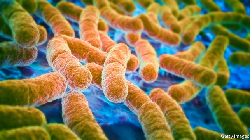
Gut bacteria exposed to antibiotic and non-antibiotic drugs develop the same resistance processes, so non-antibiotic drugs can develop antibiotic resistance, but they can eliminate some strains of bacteria which are otherwise intractable, what can be a good news for new treatments.
Read more:
Reduced-calorie diet shows signs of slowing ageing in people
By Alison Abbott
Source: Nature, 22 March

A trial called CALERIE has monitored for 2 years the effects of caloric restriction on 200 healthy, non-obese human adults, giving the strongest evidence of the slowing down impact on metabolism, raising hopes in the possibility to increase the lifespan, also with targeted drugs.
Read more:
https://www.nature.com/articles/d41586-018-03431-x
High tech translations
By Didier Sanz
Source: Le Figaro, 12 March
The linguistic translation based on the artificial intelligence can today understand the deep structures of the languages, sounded out through large database from official texts with a statistical approach and outcomes which are more and more accurate. Soon linguistic barriers won’t be longer a problem.
Vaccines won’t overload your child’s immune system- or increase the risk of other infections
By Kimberly Hickok
Source: Science, 6 March

A recent study on the medical records of 900 infants in the USA between 2003 and 2013 has shown that there is no link between vaccines administered before the age of 2 and diseases contracted from ages 2 to 4 and not covered by vaccinations.
Read more:
Study questions whether adults can really make new neurons
By Emily Underwood
Source: Science, 7 March
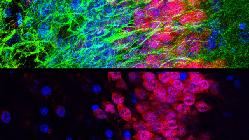
A study published in Nature has disappointed the hope about the possibility of neurogenesis in adult patients for therapeutic purposes, but the controversial techniques used in the experiment leave open the debate and seem encourage further research.
Read more:
A cure for hunger or just a gimmick?
Source: The Independent, 4 March
A Silicon Valley food start-up has produced a fortified cassava porridge, popular with kids and cheap to produce, which can meet the nutritional needs of the population in the poorest countries. Although it can’t solve the development problems, it can help many people.
On twitter, falsehood spreads faster than truth
Source: The Economist, 10 March

A study carried out at MIT’s Laboratory for Social Machines examined every tweet sent between 2006 and 2017, finding that, on average, true stories take six times less to become viral. The reason seems to be that fake news is more appealing because they generate strong emotions.
Read more:
AI researchers embrace Bitcoin technology to share medical data
By Amy Maxmen
Source: Nature, 9 March
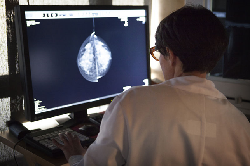
Science needs massive quantities of data. Researchers are studying a system based on blockchain technology, which allows people to share their medical records with scientists, in order to train AI algorithms to deliver better diagnoses. This method complies with the security required by privacy laws.
Read more:
https://www.nature.com/articles/d41586-018-02641-7
A different biological clock: why some women care more about buying a home than having a baby
By Cara Strickland
Source: The Washington Post, 25 January
After a British study, behind couples, the female rate of home purchasers is larger than the male one, although women still earn less than men. The need to put down roots is similar to a biological clock which overshadows also the care for their own appearance.
Women are better at investing than men –but are still paid less
By David Prosser
Source: The Independent, 3 March
After several studies, the performances of the women working as fund managers far exceed those of their male colleagues, yet the female presence in the sector is low or under-positioned, and both wages and bonuses are with the same results extremely lower. Even as clients, women are better at betting on their money.
La création d’un outrage sexiste et sexuel préconisé
By Esther Paolini
Source: Le Figaro, 1 March
In France a cross-parliamentary group has presented a law proposal which intends to affect the acts with offensive, threatening or hostile character and a sexual or sexist reason, that place themselves in the grey area between the harassment and making passes, till now not easily configurable as a type of offense.
La symptothermie ou le retour de la contraception naturelle
By Marie Maurisse
Source: Le Temps, 24 February
Among the new technologies that have burst into the female health’s sector, an app allows the women to know their own fertile period with a 98% accuracy rate. This tool has been recognized by the WHO and is not to be confused with the Ogino method.
Verschieben neue Riesenviren die Grenzen des Lebens?
By Daniel Lingenhöhl
Source: Die Zeit, 28 February
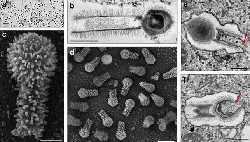
A study published in “Nature Communications” reports the discovery of two new types of giant viruses, called Tupanviruses, equipped with a genetic asset able to perform the protein synthesis and only lacking the ribosome. About their formation, biologists present different fascinating hypothesis.
Read more:
Making quantum computers reliable
Source: The Economist, 22 February

Google’s Project Bristlecome intends to develop a quantum machine with 49 qubits to solve hard or impossible mathematical problems, but the reliability of the future calculations devices will depend also by the new hardware, and not only by the quality of qubits.
Read more:
Upgrade makes genome editor CRISPR more muscular, precise
By Jon Cohen
Source: Nature, 28 February
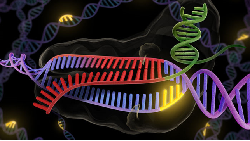
A new version of CRISPR technique engineered by a team from Harvard University through modifying the Cas 9 enzyme, could allow to cut and replace many parts of the genome that have been so far inaccessible to researchers, and associated with diseases that couldn’t be treated.
Read more:
https://www.nature.com/articles/d41586-018-02616-8
Astronomers detect light from the Universe’s first stars
By Elizabeth Gibney
Source: Nature, 28 February

Light signals from the early stars formed 180 million of years after the Big Bang seem to give evidence of the influence of dark matter in the Universe’s formation. Once detected the dark matter in forms different from the gravitational effects, that could explain the difficulty to see it and lead to new experiments.
Read more:
Info
-
Pubblicato il :
05/04/2018
Modificato il : 04/04/2019

